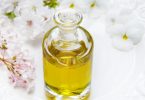Looking for a way to keep your home clean and germ-free without relying on harsh chemicals? Enter hydrogen peroxide, a simple yet effective solution that can revolutionize your cleaning routine.
This unassuming liquid boasts a multitude of uses, from disinfecting countertops to removing tough stains, cleaning glass surfaces to sanitizing bathroom fixtures. But its benefits don’t stop there.
With hydrogen peroxide, you can say goodbye to mold and mildew, freshen up carpets and upholstery, and even whiten grout and tile. Intrigued? There’s more.
This versatile cleaner can also eliminate odors from fabrics and bring new life to your cutting boards and kitchen utensils. So, why settle for conventional cleaning methods when hydrogen peroxide offers a safer and more environmentally friendly alternative?
Disinfecting Countertops
To effectively disinfect your countertops, regularly use hydrogen peroxide. This versatile cleaning agent isn’t only safe and affordable but also highly effective in killing bacteria, viruses, and other harmful microorganisms that may be lurking on your kitchen surfaces. Hydrogen peroxide’s powerful oxidizing properties make it an ideal choice for keeping your countertops clean and germ-free.
To begin the disinfection process, simply pour some hydrogen peroxide onto a clean cloth or sponge. Then, thoroughly wipe down your countertops, paying particular attention to areas that come into contact with raw meat, fruits, vegetables, or other potentially contaminated items. Allow the hydrogen peroxide to sit on the surface for a few minutes to ensure maximum disinfection.
Unlike harsh chemicals, hydrogen peroxide is non-toxic and safe to use around food preparation areas. It breaks down into water and oxygen, leaving no harmful residues behind. This makes it an excellent choice for households with children and pets, where ensuring a safe and sanitary environment is a top priority.
Removing Tough Stains
If your countertops have tough stains that need to be removed, hydrogen peroxide is here to help. This versatile cleaning agent can effectively tackle stubborn stains and leave your countertops looking clean and pristine.
To begin, start by applying a small amount of hydrogen peroxide directly onto the stain. Let it sit for a few minutes to allow the peroxide to penetrate and break up the stain.
Next, use a clean cloth or sponge to gently scrub the area in a circular motion. The bubbling action of the hydrogen peroxide will help lift the stain from the surface.
For more stubborn stains, you may need to repeat this process multiple times. Once the stain has been lifted, rinse the area with water and dry it thoroughly.
Remember to always test the hydrogen peroxide on a small, inconspicuous area of your countertop before applying it to the stain, to ensure it doesn’t cause any damage.
With hydrogen peroxide as your cleaning ally, tough stains will no longer be a problem for your countertops.
Cleaning Glass Surfaces
Clean your glass surfaces effortlessly with the power of hydrogen peroxide. Glass surfaces, such as windows, mirrors, and glass tables, can often accumulate dirt, fingerprints, and smudges, making them appear dull and unattractive. But fret not, as hydrogen peroxide can come to your rescue.
To start, gather the necessary supplies: a spray bottle, hydrogen peroxide, and a lint-free microfiber cloth. Dilute the hydrogen peroxide with equal parts water in the spray bottle. Shake well to mix the solution.
Next, lightly spray the diluted hydrogen peroxide onto the glass surface. Make sure to cover the entire area evenly. Allow the solution to sit for a few seconds to penetrate the grime.
Then, take the lint-free microfiber cloth and gently wipe the glass in a circular motion. The hydrogen peroxide will work its magic, breaking down the dirt and stains without leaving streaks. For stubborn spots, apply a little more pressure, but be careful not to scratch the glass.
Sanitizing Bathroom Fixtures
For a hygienic bathroom, ensure your fixtures are properly sanitized.
Bathroom fixtures, such as faucets, showerheads, and toilet handles, can be breeding grounds for bacteria and germs. To keep these areas clean and germ-free, hydrogen peroxide can be a highly effective solution.
Start by mixing equal parts hydrogen peroxide and water in a spray bottle. Then, spray the solution onto the fixtures, making sure to cover all surfaces. Allow the hydrogen peroxide to sit for a few minutes to effectively kill any bacteria or germs present.
Next, use a clean cloth or sponge to wipe down the fixtures, removing any dirt or grime. Pay close attention to hard-to-reach areas and crevices where bacteria can accumulate. Rinse the fixtures with water to remove any remaining hydrogen peroxide residue.
Hydrogen peroxide not only sanitizes bathroom fixtures but also helps to remove stains and brighten the surfaces. Its antimicrobial properties make it an excellent choice for maintaining a clean and hygienic bathroom. Remember to wear gloves and ventilate the area while using hydrogen peroxide to ensure safety.
Removing Mold and Mildew
To effectively remove mold and mildew from your bathroom fixtures, consider using hydrogen peroxide. Mold and mildew can be stubborn and unsightly, but hydrogen peroxide provides a safe and effective solution.
Start by mixing equal parts of hydrogen peroxide and water in a spray bottle. Spray the solution directly onto the affected areas, making sure to cover all the mold and mildew spots. Let it sit for about 10 minutes to allow the hydrogen peroxide to penetrate and break down the mold and mildew.
Then, using a scrub brush or sponge, scrub the area to remove any remaining residue. Rinse the fixture thoroughly with water to remove any traces of hydrogen peroxide.
Hydrogen peroxide not only kills mold and mildew but also helps to prevent their regrowth. Its powerful oxidizing properties attack the mold and mildew at a molecular level, eliminating them effectively and safely.
Remember to wear gloves and use proper ventilation when working with hydrogen peroxide. With regular use, hydrogen peroxide can help keep your bathroom fixtures mold and mildew-free, ensuring a clean and healthy environment.
Freshening up Carpets and Upholstery
When it comes to freshening up your carpets and upholstery, hydrogen peroxide can be a game-changer. It’s a versatile cleaning agent that not only removes stains but also eliminates odors, leaving your carpets and upholstery looking and smelling fresh. Hydrogen peroxide works by breaking down organic compounds and removing dirt and grime from the fibers of your carpets and upholstery.
To freshen up your carpets, start by vacuuming them thoroughly to remove any loose dirt and debris. Then, mix equal parts of hydrogen peroxide and water in a spray bottle. Test the solution on a small, inconspicuous area of your carpet to make sure it doesn’t cause any discoloration or damage. If it’s safe to use, spray the solution onto the stained or odorous areas of your carpet. Let it sit for a few minutes, then blot the area with a clean cloth or sponge. Repeat this process as necessary until the stain or odor is gone.
For upholstery, mix a solution of hydrogen peroxide and water in a bowl. Dip a clean cloth or sponge into the solution and wring out any excess liquid. Gently blot the stained or odorous areas of your upholstery, being careful not to saturate the fabric. Allow the upholstery to air dry, and repeat the process if needed.
Cleaning Cutting Boards and Kitchen Utensils
Cleaning cutting boards and kitchen utensils is an essential step in maintaining a hygienic and safe food preparation environment. These surfaces come into direct contact with our food, making it crucial to keep them clean and free from harmful bacteria. Hydrogen peroxide can be a highly effective and chemical-free solution for this task.
To clean your cutting boards and kitchen utensils, start by rinsing them with warm water to remove any visible debris. Next, pour a small amount of hydrogen peroxide onto a clean cloth or sponge and wipe down the surfaces thoroughly. The hydrogen peroxide will help to kill bacteria and remove any lingering odors.
For cutting boards, pay extra attention to any grooves or crevices where bacteria can hide. Scrub these areas with a brush to ensure a thorough clean. Rinse the cutting board with water after cleaning to remove any residue.
When it comes to kitchen utensils, such as knives, spatulas, and serving spoons, make sure to clean both the handles and the blades. Again, use a cloth or sponge soaked in hydrogen peroxide to wipe down the utensils, paying close attention to any crevices or hard-to-reach areas. Rinse the utensils with water and dry them thoroughly before using them again.
Whitening Grout and Tile
Looking to brighten up your grout and tile? Hydrogen peroxide can be a great solution for whitening and revitalizing your surfaces. It’s a chemical-free alternative that can effectively remove stubborn stains and discoloration.
To start, mix equal parts hydrogen peroxide and water in a spray bottle. Spray the solution onto the grout and tile, ensuring complete coverage. Let it sit for about 10 minutes to allow the hydrogen peroxide to penetrate and break down the dirt and grime.
Next, scrub the grout lines and tile surface with a brush or sponge. The bubbling action of hydrogen peroxide will help lift away stains and brighten the grout. For tough stains, you can use a toothbrush to target specific areas.
After scrubbing, rinse the area with water to remove any remaining hydrogen peroxide solution. You’ll immediately notice a difference in the brightness of your grout and tile.
For extra stubborn stains, you can repeat the process or use a higher concentration of hydrogen peroxide. However, be cautious when using higher concentrations, as they may cause discoloration or damage to certain types of tile.
Removing Odors From Fabrics
To freshen up your fabrics, hydrogen peroxide can be a powerful ally in eliminating odors. Whether it’s the lingering smell of sweat on your gym clothes or the musty odor on your towels, hydrogen peroxide can help remove these unpleasant odors effectively and efficiently.
To get started, simply mix equal parts hydrogen peroxide and water in a spray bottle. Test the solution on a small, inconspicuous area of the fabric to ensure it doesn’t cause any discoloration. Once you’ve confirmed it’s safe to use, spray the mixture onto the affected areas of the fabric, focusing on the spots where the odor is most prominent.
Allow the solution to sit on the fabric for a few minutes to penetrate and break down the odor-causing molecules. Afterward, wash the fabric as usual, using your preferred detergent. You’ll be amazed at how hydrogen peroxide works to eliminate the odors, leaving your fabrics smelling fresh and clean.
It’s important to note that hydrogen peroxide is safe to use on most fabrics, but it’s always a good idea to check the care label for any specific instructions or limitations. Additionally, avoid using hydrogen peroxide on delicate fabrics or those that are prone to color bleeding.







